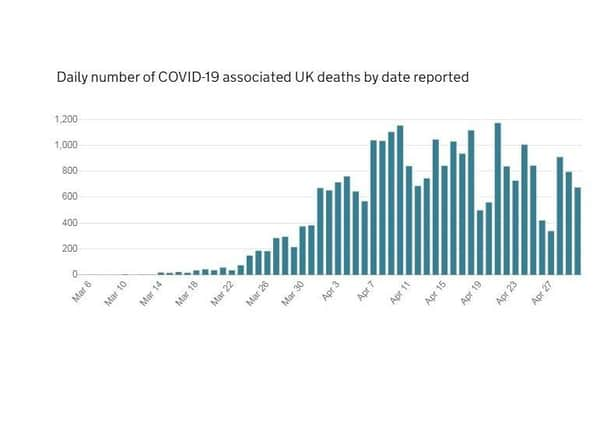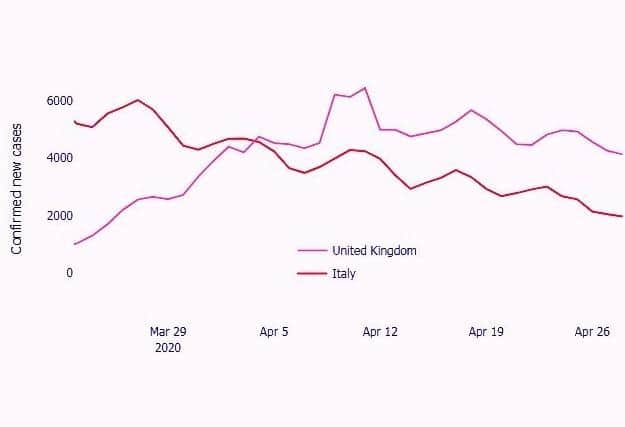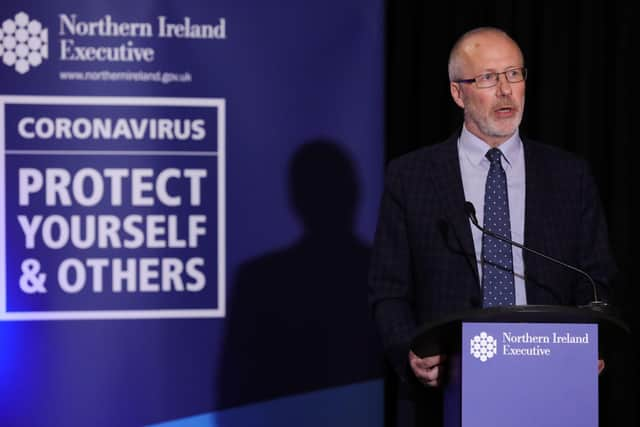Coronavirus: Top scientist says traffic numbers ‘show people getting lax about lockdown’ amid optimism about contagion rate


Speaking at a Stormont press conference last night Professor Ian Young, chief scientific advisor to the Department of Health, said that in terms of social distancing and other restrictions, there appears to be “a reasonably good” adherence to the policies.
But he went on to say that “there is some evidence, particularly around traffic usage, which seems to suggest that adherence is declining slowly”.
Advertisement
Hide AdAdvertisement
Hide AdAddressing the reporters, he said: “I guess the message I’d like to give today is to ask people to reflect on that, reflect on where we are, and understand the importance of renewing the commitment to the current measures. They’re in place for a good reason.”


He also talked in some detail about the science behind their modelling.
In particular, he wanted to draw a factor called “R0” to public attention.
He said: “We have now passed the peak of the epidemic in terms of cases, hospital admissions, ICU occupancy, in terms of this current first wave... It is now clear that while cases are falling they are falling very slowly indeed.
Advertisement
Hide AdAdvertisement
Hide Ad“The key to understanding it in scientific terms is to appreciate the importance of a number which has been mentioned more than once in recent times: the basic reproduction number – also known as R-nought or R-zero (R0).


“If one person infects three other individuals who then have the virus, then R 0 is said to be three.
“The key value for R0, and one I hope everybody will bear in mind and be aware of in the months to come, is one.
“When R0 is above one, the epidemic will increase in all of its aspects. When R0 is below one, we will have the epidemic under control and cases will begin to decrease.”
Advertisement
Hide AdAdvertisement
Hide AdBefore social distancing and the lockdown, R0 stood at just under three.


And right now R0 lies between 0.8 and 0.9 – “meaning that each person with Covid infects less than one other individual on average”.
DRUG IN SPOTLIGHT AS DEATH TOLL NEARS 250,000
Prof Young was also asked about the efficacy of Remdesivir – a drug which has reportedly helped some people to recover from coronavirus more quickly than they otherwise would.
The BBC quoted Dr Anthony Fauci, head of the US National Institute of Allergy and Infectious Diseases, saying a government-run trial involving 1,063 people had shown “a clear-cut, significant, positive effect in diminishing the time to recovery”.
Advertisement
Hide AdAdvertisement
Hide AdProf Young said many “novel treatments” are being tested, and Remdesivir appears to show “very positive results” according to reports, but they are “waiting for fuller data on that to be published” – adding there are some UK clinical trials of the drug.
In terms of a global picture, the famed medical university Johns Hopkins has been keeping a daily tally of global deaths, which it put at just under 223,000 at time of writing.
The USA was worst, with roughly 61,300 deaths.
In terms of major European nations, Italy’s fatalities stood at about 28,000, Spain’s at just under 25,000, and France at slightly under 24,100. As of 6pm last night, the UK government said the UK death toll of people who tested positive for coronavirus was 26,771.
Charts from both Johns Hopkins and the UK government show a gradual trend towards falling daily fatality rates in the UK (from a peak of 1,172 on April 21, to 674 yesterday).
A message from the Editor:
Advertisement
Hide AdAdvertisement
Hide AdThank you for reading this story on our website. While I have your attention, I also have an important request to make of you.
With the coronavirus lockdown having a major impact on many of our advertisers - and consequently the revenue we receive - we are more reliant than ever on you taking out a digital subscription.
Subscribe to newsletter.co.uk and enjoy unlimited access to the best Northern Ireland and UK news and information online and on our app. With a digital subscription, you can read more than 5 articles, see fewer ads, enjoy faster load times, and get access to exclusive newsletters and content. Visit https://www.newsletter.co.uk/subscriptions now to sign up.
Our journalism costs money and we rely on advertising, print and digital revenues to help to support them. By supporting us, we are able to support you in providing trusted, fact-checked content for this website.
Alistair Bushe
Editor